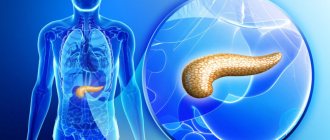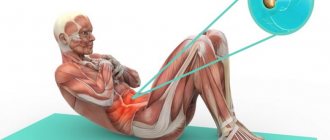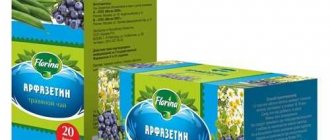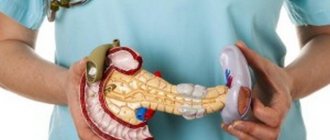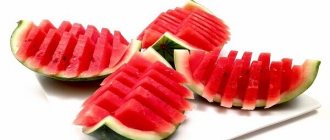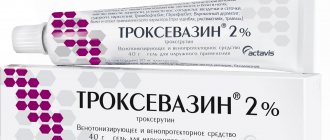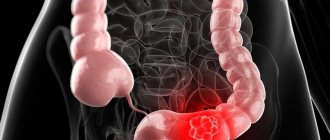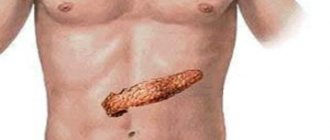A correctly performed therapeutic massage of the pancreas for pancreatitis improves the well-being of the sick person by reducing the intensity of the painful symptoms characteristic of this disease.
Today, various interpretations of massage techniques are practiced that have a beneficial effect on the patient’s condition. However, before you start using them, you must always consult with your doctor to determine how appropriate their use is, taking into account the individual characteristics of the course of pancreatic pathology.
The benefits and therapeutic effects of massage procedures
Therapy of such a serious disease as pancreatitis requires an integrated approach, the action of which is aimed at the following pathological factors:
- Etiological.
- Pathogenetic.
- Symptomatic.
Therefore, a properly selected therapeutic massage:
- Prevents the development of inflammatory processes in the pancreas.
- Improves blood circulation of the gland and its neighboring organs.
- Accelerates the regeneration of damaged gland tissue.
- Normalizes the secretory functions of the pancreas.
- Relieves pain and swelling of the affected organ.
- Prevents congestion in the diseased organ.
- Reduces the activity of already present pancreatitis.
- Increases the performance of the diseased gland.
When massage is contraindicated and can harm a person
Despite the fact that massage has a positive effect on the patient’s condition, there are a number of factors in which it is strictly prohibited. If the patient has some pathological phenomena, it will do more harm than good.
Contraindications for it are:
- Acute phase of pancreatitis.
- The presence of ulcers in the pancreas.
- High body temperature.
- The appearance of skin rash during pancreatic relapse.
- Inflammation of the lymph nodes, including the cervical and submandibular ones.
- Presence of hypertensive blood pressure.
- State of alcoholic intoxication.
- Psychical deviations.
- Epilepsy with frequent exacerbations.
- Bleeding.
- Gynecological and venereal diseases.
- Oncology (massage increases blood flow, which promotes tumor growth).
- Presence of fatty tissues and fibroids.
- Presence of nausea with vomiting.
Therapeutic massage will benefit patients with gastritis, pancreatitis and kidney pathologies only in the complete absence of the above complications.
For what form of pancreatitis can massage be used?
So, is it possible to do massage with pancreatitis? Doctors note that during the period of exacerbation of the disease, it is prohibited to use any massage procedures. The patient should observe bed rest, fasting and avoid any active thermal intervention on the area of the inflamed pancreas.
In case of acute exacerbation of pancreatitis, complete fasting is indicated for the first 2-3 days; you are allowed to take only water, a decoction of rose hips or chamomile. Cold must be applied to the abdominal cavity.
After the acute pain symptoms have been relieved, and the patient’s health is consistently good, simple light gymnastic exercises are allowed to be performed, which will help avoid the negative consequences of congestion due to prolonged stay in bed, which does not have the best effect on the functioning of the kidneys, heart, and lungs and large intestine.
If a gastroenterologist has recommended exercises during bed rest, you should take it seriously to avoid possible aggravation of your health.
In the chronic course of pancreatitis in the remission phase, the use of manual techniques can bring the moment of recovery closer. Therapeutic massage for chronic pancreatic disease helps:
- Remove spasmodic syndrome of the gallbladder, pancreatic ducts and common bile duct.
- Relax the hepatogastric and hepatoduodenal ligaments, which allows you to more actively influence the gland itself during the procedure.
- Restore innervation and blood circulation of all internal systems and organs.
- Normalize the endocrine function of the pancreas, which is important in the presence of diabetes.
- Improve the outflow of bile and pancreatic contents, thereby preventing the occurrence of cholelithiasis and cholecystitis.
Action on the pancreas
At the stage of acute inflammation of the pancreas, any mechanical impact on the organ is contraindicated due to severe pain, nausea, vomiting, diarrhea and the person’s severe general condition. At this time, the patient should fast for the first 2-3 days, drink only clean water or rosehip decoction. Cold should be applied to the stomach and strict bed rest should be observed.
There can be no talk of any massage during exacerbation of the inflammatory process.
But when a chronic disease enters the remission phase, certain manual techniques significantly speed up the patient’s recovery. Massage has a number of positive effects in pancreatic pathologies:
- Spasm of smooth muscle organs (pancreatic ducts, gallbladder, common bile duct) occurs.
- The hepatic-duodenal and hepatogastric ligaments relax, which improves access for the massage therapist directly to the gland.
- Blood circulation and innervation of internal organs are restored.
- The outflow of pancreatic contents, as well as bile, improves. This prevents the development of cholecystitis, cholelithiasis, and treats dyskinesia of the biliary tract and intestines.
- The condition of the endocrine gland is normalized. This is especially important in pancreatogenic diabetes mellitus.
Features of massage technology under the supervision of a specialist
Therapeutic exercise and massage for pancreatic disease do not have any individual characteristics taking into account this pathology. Typically, the effect of these procedures is aimed at the abdominal muscles and the diaphragm area.
This is explained by the fact that, due to its anatomical location, the pancreas is practically inaccessible and is covered by the stomach, so direct massaging of the pancreas is impossible. But massage of the abdominal cavity and diaphragm, as well as the gallbladder and liver, makes them tense, thereby achieving a direct effect on the pancreatic organ.
For inflammation of the pancreas, it is more often practiced:
- Classic option.
- Eastern spot.
- Canned.
The implementation of any of them should be entrusted to a massage therapist with medical knowledge, who knows perfectly well the physiology of internal organs and human anatomy.
Classic massage
Abdominal massage is performed with the aim of relaxing its internal organs with further stimulation of the endocrine and exocrine functions of the pancreas.
This manual procedure uses the following techniques:
| Impact technology | Description |
| Stroking | Allows you to relax the anterior wall of the peritoneum, prepare the tissue for further manipulation |
| Trituration | The external and internal tissues are heated, and the activity of blood flow in them increases. |
| Pressing | The first enhanced impact on specific points of the pancreas (head, body, tail). The pressure corresponds to certain phases of breathing: for example, the patient takes a deep breath in the stomach, and then exhales as much as possible; at the moment of exhalation, the massage therapist palpates the corresponding point of the abdominal cavity. In other words, there is a combination of massage technique with breathing exercises |
| Kneading | At this stage, deep palpation of the pancreas is carried out in order to improve blood circulation in it |
| Chopping and pounding | Vibration massage improves the outflow of pancreatic secretions from the organ |
In a situation where, during a massage, a person begins to experience painful discomfort, the manipulation is stopped or the intensity of the massage effect is reduced.
Acupressure
It should be emphasized that acupressure for pancreatitis can be difficult due to the anatomical structure of the human body. However, manual influence, for example, on active points of the peritoneum or feet can be performed not only by a professional massage therapist, but also by the patient himself after mastering certain skills.
The main advantage of oriental acupressure of the feet is that in some cases it can be used even during the acute phase of the disease.
Acupressure of the pancreas is carried out by pressing on certain biologically active points of the body.
| Point name | Location | The result of the massage effect |
| Da-doo (first point) | In front of the first metatarsophalangeal joint of the foot, where the line of demarcation of white and red skin passes. Its location is easy to feel at the base of the thumb. | The circulation of fluid in the body increases, the production of pancreatic secretory substance increases, its outflow improves, and the activity of blood flow throughout the body increases. |
| Tai-bye (second point) | It is located at the border of the red and white skin of the foot, that is, on the tufts of the foot under the big toe, at a distance of 1 cm from Dadu-doo towards the heel. | Promotes better circulation of blood fluid. By synchronously pressing on Da-doo and other points, it allows you to remove the acute symptoms of pancreatitis (heartburn, nausea, pain, bloating and other negative symptoms). |
| Gunsun (third point) | Localization - 1 cm below the second point at the very edge of the base of the metatarsal bone. | Helps get rid of painful discomfort of various localizations, has a beneficial effect on the stomach, and relieves dyspeptic symptoms. |
How exactly is therapeutic acupressure performed for pancreatitis? Its technical side is completely simple - you need to massage them clockwise for 30 minutes.
Cupping
Cupping massage involves placing medical cups on the area of the left shoulder blade, as close to the spine as possible so that they affect the muscle tissue and not the bones of the spine or shoulder blade. This type of back massage can only be used with medical permission.
So, how to properly perform this massage:
- You will need three pharmaceutical jars.
- The skin is lubricated with greasy cream, Vaseline or oil.
- Wrap cotton wool around tweezers, soak it in alcohol and set it on fire.
- Insert the homemade wick inside the jar and immediately remove it, and quickly place the jar itself on the skin and cover it with a blanket.
- Properly installed cups should not suck into the skin.
- The exposure time is 5 minutes (during the first procedure) and subsequent 10-15 minutes.
- To remove the jars, you need to hold the skin with one hand and carefully lift the edge of the jar with the other hand.
- After removing them, the patient should lie quietly for 30-40 minutes.
- The frequency of such a massage is no more than once every 7 days (4 procedures per month).
Pressure using the A.T. method Ogulova
Remission and discharge from hospital
There are no specially designed massages and physical therapy for pancreatitis. The only thing a massage therapist can advise is to perform exercises on the diaphragm and abdominal muscles.
The fact is that the pancreas is anatomically difficult to reach and is covered by the stomach, therefore direct impact on the area where it is located will not give the desired results.
But when the abdominal muscles and diaphragm are tense, there is a direct impact on the inflamed organ. A psychologist will also advise you to do exercises - physical activity distracts you from thoughts about pain and allows you to feel pleasant fatigue.
Features of self-massage
Self-massage of the abdominal cavity is an affordable and free option for massage techniques. However, its use must be agreed upon with a gastroenterologist, who will suggest the best option.
A prerequisite for this manual procedure is:
- The patient should feel well.
- Complete absence of acute signs of pancreatitis and inflammatory processes in other digestive organs, which is confirmed by the results of clinical studies and ultrasound of the abdominal cavity.
So, what are the features of self-massage techniques? Doctors say the best option is to massage the pancreas through the use of various types of breathing exercises, which can be done in any position of the body: lying down, sitting, standing on all fours.
Tennis ball massage
Self-massage with the help of a tennis ball, through which pressure is applied to the area of the left hypochondrium, has proven itself well:
- Lie on your back, bend your knees.
- Place the ball in a warm sock and take it in your right hand.
- Place it over the desired area.
- Use your left hand to press on the ball for a more intense effect on the desired area of the body.
- Observing the following sequence: at the moment of stopping breathing after exhalation, apply stronger pressure, twisting the ball from the edge to the center, and then up to the ribs. Such a massage will be extremely useful for patients with pancreatitis combined with diabetes.
Self-massage of the abdomen is recommended to be performed 1-2 times daily, provided that the procedure is well tolerated. The massage should be performed on an empty stomach and after emptying the intestines.
Visceral-diaphragmatic-osteopathic massage
This type of manual technique refers to breathing exercises, which involves stimulation of the abdominal organs located in the visceral area by regulating intra-abdominal pressure and mechanical effects on the muscular structure of the peritoneum and diaphragm. This massage is performed in stages:
| Stages of implementation | Characteristic |
| First stage | It is necessary to take a long breath, performed in four phases, that is, sequentially filling the lower abdomen with air, then the peri-umbilical zone, then the hypochondrium and, last but not least, the lungs. At the highest point of inhalation, hold your breath for 2 seconds. |
| Second phase | Similar steps are performed, but in reverse order. |
| Third stage | Exhale completely, then hold your breath, and perform 4 movements simulating chest breathing, allowing you to relax the muscles of the abdominal walls. If done correctly, only one aperture will be used. |
| Fourth stage | At the moment the breathing stops, four pushes are made with the abdominal muscles in the following sequence: the upper group of muscle tissues tenses, then the middle one, and lastly the lower abdominal area. |
It is worth paying attention that the first procedure of this massage consists of 4-5 stages. If a person tolerates it well, their number can be increased to sixteen.
Banks
An effect similar to a massage is possible with the help of cups that are placed on the left shoulder blade, closer to the spine - so that they hit the muscle layer, and not the bone of the shoulder blade or the spine.
This procedure is permitted only after consultation with the attending gastroenterologist.
- To do this, take three medical jars and lubricate the skin with oil or Vaseline.
- Wrap cotton wool around tweezers, soak it in alcohol and set it on fire.
- The wick obtained in this way is placed in a jar and immediately removed, immediately placing the jar on the prepared skin and covering it with a blanket.
- The jars are left for 15 minutes; they must be placed so that the skin is not sucked into the jar.
- To remove the cans, you need to hold the skin with one hand and gently lift the edge of the can with your thumb.
- The patient is left alone for forty minutes.
- The procedure can be carried out no more than once a week, and the course should not exceed a month, that is, only four procedures.
